TEFISEN's Latest Masterpiece –Two-Color Curved Surface Pad Printer
In the world of industrial printing, curved surface printing stands out as a key area for real technological advances. Traditional methods run into real problems with oddly shaped items. Things like ink not sticking evenly, patterns getting warped, and colors not lining up right cause a lot of trouble. Now, the dual-color curved surface pad printer called TFS-CP2-160B dual-color curved surface pad printer changes all that. It uses a steel plate that measures 100 by 250 millimeters. The machine runs at 1200 cycles every hour. It handles workpieces up to 170 millimeters high. This setup sets new benchmarks for accuracy and speed in printing on curves. People often wonder about curved surface pad printing. Its basic principles set it apart from older printing ways in important details. This piece looks at how the device overcomes curved surface printing hurdles. It covers technical issues, fixes for them, and the steps in making things. Experts from TEFISEN explain it all step by step.

I. Characteristics of the TFS-CP2-160B Dual-Color Curved Surface Pad Printer
The TFS-CP2-160B dual-color curved surface pad printer sells well as a top model from Guangdong TEFISEN Technology Co., Ltd. It runs on servo motors for movements up, down, left, and right. A big touchscreen makes it simple to use. Here are its main features in detail. It handles dual-color printing in a fully automatic way. The setup includes an automatic cleaning system along with hot air blowing. It works steadily and saves energy. That happens under steady air pressure of 0.6 MPa. The power supply stays at 220 volts and 1.6 kilowatts as standard. The printing speed reaches up to 1200 cycles per hour. That meets the demands of big production runs pretty much every time. The largest steel plate size comes in at 100 by 250 millimeters. It prints patterns over bigger areas without issues. The highest workpiece height reaches 170 millimeters. So it works with everything from tiny parts to medium products. The whole machine weighs 360 kilograms. Its size measures 1096 by 851 by 1592 millimeters. That creates a strong, rigid frame. It supports exact movements even at fast speeds.
II. Detailed Production Process of the TFS-CP2-160B Dual-Color Curved Surface Pad Printer
A machine like this runs smoothly because its steps connect in a tight loop. The TFS-CP2-160B follows a highly automated closed system for production. Step one involves preparation and loading. Operators fit custom steel plates under two separate ink cup setups. They add the right colors of ink to each. At the same time, workpieces go into special holders. That can happen by hand or through an automated line with robotic arms. The holder gives the workpiece a fixed, stable spot every time. It ensures the position stays the same for consistency.
Step two covers the first-color printing cycle. First comes ink supply and doctoring. The ink cup at the initial station spreads ink over the steel plate. Then a sharp blade scrapes away any extra ink. Only the ink in the carved grooves stays behind. Next is ink pickup. The silicone pad for the first color shifts to the plate. It presses down and lifts the full pattern from those grooves. Then pad printing takes over. The pad with the inked pattern moves over the workpiece. It presses onto the curved area following a set path. That finishes the transfer for the first color.
Step three handles precision workstation conversion. While the first color prints or right after, servo motors turn the worktable. It indexes exactly to move the workpiece. The item with its first color shifts to the second-color spot. It might rotate or slide over accurately. The key here is repeat positioning accuracy. That makes sure the colors line up just right.
Step four repeats for the second-color printing cycle. The next station goes through the same steps as the first. It supplies ink, doctors it, picks it up, and prints with the pad. The second color overlays precisely where it needs to go. That combines both colors into one pattern.
Step five deals with unloading and curing. The turning worktable moves the finished dual-color workpiece to the unload area. Someone takes it out by hand, or an automatic tool grabs it. Most printed items head to a UV curing oven next. Or they go through an infrared drying line. That cures the ink fast for better sticking and wear resistance.
The full cycle repeats over and over at 1200 times per hour. Every move gets calculated and controlled with care. It blends speed and accuracy into one solid process.
III. Comparison with Single-Color Machines
The TFS-CP2-160B dual-color curved surface pad printer pulls together all the steps for dual-color printing into one smooth automated loop. It works much better than older ways of doing things. You can see that in this comparison chart. Traditional standalone sequential printing goes like this. It starts with loading. Then it prints color one. After that comes unloading. Next is secondary loading. Then print color two. Followed by drying. And finally unloading again. The TFS-CP2-160B dual-color curved surface pad printer integrated printing simplifies it a lot. Loading happens first. Then station one prints color one while station two prints color two in a synchronous cycle. Unloading wraps it up.
IV. Three Major Technical Challenges in Curved Surface Printing
1. Uneven Ink Adhesion. The Physical Dilemma Caused by Curvature
Curved objects have different levels of bend. That makes ink face gravity and surface tension during transfer. It leads to problems like ink piling up. Or flow marks showing. Or ink breaking apart. Take a cylinder with a five centimeter radius for example. The middle area around the equator gets too much ink because the curve is gentler there. The top and bottom poles do not get enough coverage since the curve is steeper. Industry stats say about thirty percent of these printed items need rework. That is due to ink not spreading evenly.
2. Pattern Distortion. The Inevitable Cost of Geometric Projection
A flat pattern gets moved to a curved spot. It changes shape in three dimensions. That causes stretching in some places. Or squeezing in others. Consider a sphere ten centimeters across. The equator part of the pattern might stretch horizontally by up to fifteen percent. The polar areas could compress vertically by more than eight percent. Without fixing it ahead of time with pre-deformation, text or logos look warped. The distortion stands out clearly.
3. Multi-Color Registration Deviation. The Millimeter-Level Game of Dynamic Positioning
Dual-color work needs two separate ink applications. Even small shifts in the part's position inside the holder can mess things up. Or changes in the pad's pressure do the same. Tests show that if the colors are off by more than zero point one millimeter, people notice the pattern is not aligned. Equipment has to be very precise for positioning.
Table 1 covers technical challenges and their impacts in curved surface printing.
|
Technical Challenge
|
Typical Scenario | Failure Rate | Cost Impact |
| Uneven Ink Adhesion | Cylinder, Sphere Surface Printing | 32% | 18% Materials |
| Pattern Distortion | Instrument Panel, Toy Multi-color Logos | 25% | 12% Man-hours |
| Multi-Color Reg. Deviation | Electronic Component Dual-color Marks, PPE Logos | 21% | 25% Rework Cost |
V. Four Countermeasures for Curved Surface Printing
1. Three-Dimensional Adaptability
The silicone pad bends to match the curve's changes. It adapts right to the surface. For a cylinder five centimeters in radius, a cone-shaped pad gets over ninety-five percent contact. That comes from pressing in specific spots.
2. Pre-Deformation Pattern Correction
The system looks at the curve spread on the part beforehand. It makes a fixed printing file. On a spherical instrument panel, it stretches the pattern twelve percent at the equator. It compresses seven percent at the poles. The end result matches the design within zero point zero five millimeter error.
3. Ink Control Precision
A closed ink cup works with a doctor blade setup. That keeps the ink layer between three and fifteen micrometers thick. It cuts down on ink drooping risks.
4. Multi-Color Registration Capability
Full servo motors drive the worktable. A CCD vision system handles smart positioning. That gets dual-color alignment to zero point zero eight millimeter or less.
VI. Analysis of the Market Potential of Pad Printers in China
By 2025, Chinese pad printer market should top three point five billion RMB. It grows at eight point five percent compound annual rate. Curved surface equipment takes about forty percent of that. So the market size hits one point four billion RMB.
Regional spread shows Guangdong, Zhejiang, and Jiangsu holding over sixty-seven percent of the national share. Guangdong leads with two point two one billion RMB in production value. It creates a strong industrial cluster effect.

